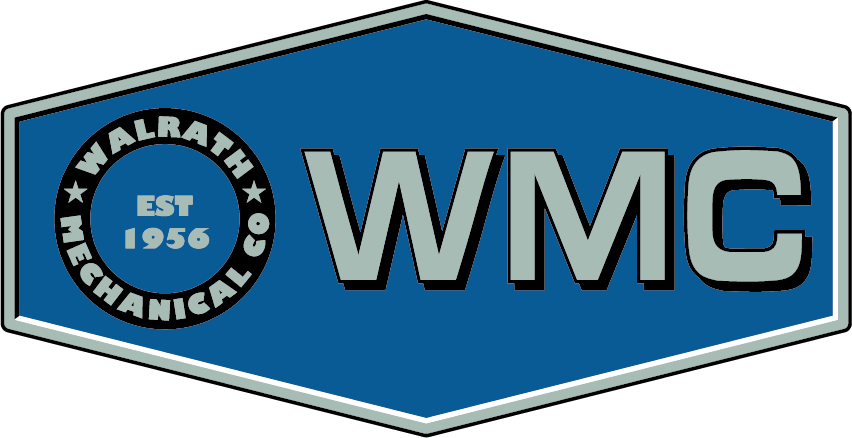HVAC Help: What Is a Commercial HVAC System?
The global HVAC market brings revenue of around $240.8 billion each year. Buoyed by increasingly efficient systems that counteract a rise in utility prices, now has never been a better time to overhaul your system. But do you know what is available to a commercial property?
There are three main types you might consider. Read on as we discuss the commercial HVAC options available to your business.
What Is Commercial HVAC?
Commercial heating, ventilation, and air conditioning units (HVAC) serve the same purpose as residential ones. They aim to keep the temperature in a building comfortable, either by heating or cooling, while maintaining a moderate level of humidity. With commercial HVAC it is done on a larger scale.
With this increase, the problems that need to be solved are slightly different. Fuel to heat the building needs a bigger source, ventilation systems need to be bigger and so do cooling systems. Done correctly, your system should also reduce odor, prevent mold, mildew growth, and dilute harmful gases.
Important HVAC System Parts
Commercial HVAC systems are made up of a number of parts. All need regular maintenance to keep your business premises temperate and comfortable for those who work and visit there.
Thermostat
The thermostat controls your whole HVAC system. It sends a signal telling it to cool or heat depending on the desired temperature. This can be set on a timer, or controlled remotely using a SMART thermostat.
Heat Exchanger
This is an important part of the furnace. It heats the air that is pulled into the unit.
Furnace
This is where the heat comes from your HVAC system. It is one of the largest pieces and must be kept in working order with regular maintenance.
Ductwork and Vents
Ductwork and vents move the air around the building. In commercial enterprises, these are extremely important as the air often has to travel a long way. Vents can be closed off and opened to heat or cool specific areas.
Refrigerant Lines
Refrigerant is a substance that takes heat from the air and cools an area. It is important as without it you won’t get any cooling in your system. Switching between a liquid and gas state throughout the process it works in a cycle.
Types of Commercial HVAC
For commercial buildings, three main configurations are used. If you don’t know which you have, or which you should get installed then speak with commercial HVAC companies for help.
Split Systems
Split systems are often used in multi-residence properties but are also great for small businesses. You may find them in compact offices and shops. They connect to a building’s ductwork and operate through a thermostat.
These units do have some downsides. The larger the building, the more units you may need. As these tend to go on the side or roof of a building this can get expensive and the area can soon become filled with HVAC units.
Packaged Systems
Packaged systems are compact, smaller units that contain everything you need. They will house a compressor, condenser, evaporator coil, and fan coil.
You will often see these units in a place where residents need control over their individual room space. Hotels, hospital wards, and condominiums often have packaged units.
VRF Systems
VRF systems are the most advanced HVAC systems on the market. Instead of using ducts, they send refrigerant from an outdoor unit. The more refrigerant each room gets dictates its temperature.
These systems have a number of advantages over others. Efficiency is increased by around 30% compared to other ducted systems. They have more accurate temperature adjustments, take up very little space, and are easy to install.
Cost is the main downside as they can be expensive. Many also need a backup condenser in case of a breakdown.
How Do They Work?
All HVAC systems share similar principles. How this works depends on if they are heating or cooling.
Heating
Heating begins when the thermostat sends a signal to the furnace to increase the temperature. The gas burner begins and the heat from this heats the exchanger. It is the job of this to then turn the heat into air as it flows through the exchanger itself.
A motor and fan push this heated air through the system. Ductwork will deliver it to the rest of your building. Opening and closing ducts will deposit it in different zones and areas.
Cooling
This process starts with the refrigerant. It will take heat from the atmosphere and then transport it to the outside of the system. The refrigerant starts off in gas form and the compressor will compact it, raising its temperature.
The chemical then transfers into a condensation coil. Heat releases and the gas turns into a liquid. Warm air transfers outside by a blower and is released over an evaporator.
Once complete, the liquid cools again. It turns into a gas and repeats the process in a cycle. This continues until the desired temperature is reached.
Ventilation
Without ventilation, none of this would work. It allows fresh air into the commercial property. Without it, unhealthy gases could build up along with mold and mildew.
Vents use a series of pipes and flues to do this. They will open and close as necessary, releasing and bringing air into the building and systems.
Commercial HVAC Companies Near Me
Commercial HVAC is essential to the maintenance of your property. This does not mean it has to be a big deal or even costly. With regular maintenance, you can prevent any problems before they occur.
Walrath Mechanical Co. should be your first stop for HVAC maintenance. We serve Lakewood and the surrounding Colorado areas. Contact us here to discuss your needs.
